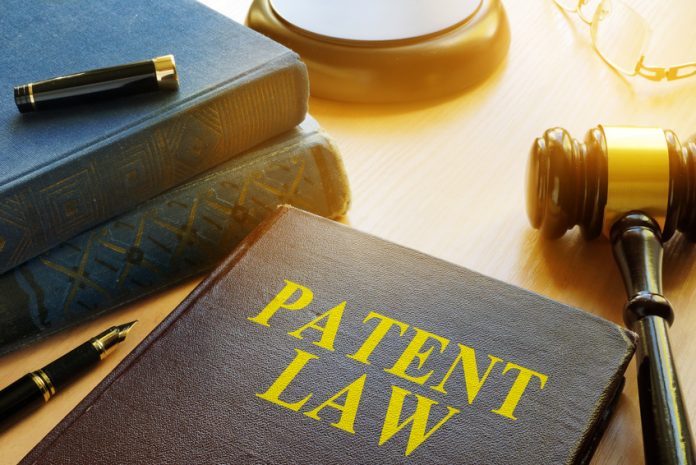This article has been written by Rashi Chandok.
This article has been published by Sneha Mahawar.
What is a patent claim
A patent claim is said to be the heart of a patent application. It defines the boundary and subject matter of the patent that is sought to be protected. The claim describes the elements or aspects of the invention that the patentee can prevent others from creating, using, or selling against his or her permission.
A claim cannot be too extensive since the applicant cannot get a patent for something that their invention cannot achieve. An applicant does not want the claim to be too limited since they do not want to lose complete protection for their invention.
To make a successful application or patent claim, it is important to conduct a detailed patent search. It helps to understand the similarities and differences between other patent applications and their own inventions.
Importance of a patent claim
As discussed above, a patent claim is an essential part of the patent application. It states the exclusive rights after the grant of patent and tells all other third parties what is or not permissible as far as invention is concerned.
In a patent registration application, a patent claim from a legal standpoint is used to specify the extent of a patent’s legal rights once the patent has been issued. Each patent specification must contain one or more patent claims that define the scope of the invention for which protection is sought.
Generally, patent claims are given at the end of a patent application. As per Section 10(4)(c) of the Patents Act, 1970 every specification must end with a claim or claims that explains the scope of the invention that needs to be protected.
In addition to extensive explanations, diagrams, flow charts, or graphical representations of the invention would further enhance and support the claims stated in an application.
Essential parts of patent claims
A patent claim comprises three parts and they are as follows:
Preamble
It is the initial part of a patent claim and states the category of the invention, like, an apparatus, article, composition, method, or process There are various kinds of categories like device, process, method, composition, apparatus, or article. While patent claim drafting one should keep two things in mind:
- To maintain consistency in the title of the invention, for instance, the process to make medicine.
- The preamble must have the main objective of the invention for which it is patented, for instance, the cure of a disease.
Transitional phrases
Transitional phrases refer to the phrases that connect the preamble of a claim to the components mentioned in the claim (which explains the functioning of an invention). In other words, transitional phrases connect the prologue to the invention’s parts.
The terms ‘comprising’ and ‘consisting of’ are two of the most prevalent transitional phrases.
- The word ‘comprising’ is seen as a broad and open-ended term,
- Whereas ‘consisting of’ is regarded as a closed phrase since it restricts the scope of the claim to the components specifically mentioned.
The body
It provides a detailed description of the claims. Also, it attempts to interlink and describe the relationship between the components of the invention. It must not simply enumerate the various components of the invention. Instead, the body must seek to establish the link between the invention’s numerous components.
Tips to draft a patent claim
- The claim must be specific and not general, unclear, speculative, or hypothetical.
- The description must back up the claims (fairly based on the description).
- Each assertion should be a single phrase that is well-written.
- A full specification’s claim(s) must pertain to a single invention or a series of innovations connected together to constitute a single inventive concept, and they must be clear, short, and reasonably based on the content disclosed in the specification.
- Each assertion should be specific and should not be repeated.
- Only claims are granted rights, not any matter mentioned in the entire specification.
- Claims determine the bounds of legal protection and serve as a barrier to innovation.
Types of patent claims
A patent claim can be of following types:
Dependent and Independent claims
A dependent claim refers to a claim that elaborate the features or limitations of the invention. The scope of a dependent claim is more specific and may include secondary characteristics of the invention.
An independent claim is a claim that stands alone and contains all of the restrictions required to define an invention. In simple words, the basic characteristics of an invention are covered by independent claims. It might be followed by further claims that specify distinct components of an invention.
Mean plus function claim
The mean plus function claim explains the purpose of a particular feature of the invention. We can state the element in a claim in the form of steps to perform a function in a mean-plus-function claim. Further, the claims are wide enough to include all of the materials or structures described in the application.
It is also known as a “step plus function” claim and is typically used in combination with an independent claim if the specifications for the invention enable the use of mean plus function language. Thus, a mean plus function claim aims to specify the functions provided by the invention’s structures or components.
Composition claim
When a chemical innovation is being patented, a composition claim is usually included. It is like a device claim, describing the chemical ingredients utilized to construct a method or a substance.
Method claim
These claims are intended to patent a unique approach or procedure that provides us with the desired or ideal outcome. Methods of analysis, methods of preparation, methods of treatment, and so on are examples of frequent patent claims.
Usually, transitional phrases like “comprising” or “comprising the steps” are used to explain method claims.
Apparatus claim
It explains a device or a network of systems found in the invention. In short, this claim outlines the invention’s components. An apparatus claim, unlike a mean plus function claim, does not address the functioning or processes of the invention. Rather, it defines the equipment or device from which the invention is made.
Other special claims
Beauregard claim
A Beauregard claim is commonly used in patents for claims relating to software and software-related technologies. Several instructions that a computer programme may process are included in the preamble of a Beauregard claim.
Furthermore, these claims are primarily concerned with establishing the operation of the program rather than the composition of the software.
Jepson claim
The preamble of a Jepson claim describes a statement pertaining to the prior art, which is followed by claims that represent an improvement over the prior art. In brief, it elaborates on the point of the uniqueness of the invention in comparison to previous art in a specific arena. Jepson claims are most common under US patent law.
Students of Lawsikho courses regularly produce writing assignments and work on practical exercises as a part of their coursework and develop themselves in real-life practical skills.
LawSikho has created a telegram group for exchanging legal knowledge, referrals, and various opportunities. You can click on this link and join:
Follow us on Instagram and subscribe to our YouTube channel for more amazing legal content.
 Serato DJ Crack 2025Serato DJ PRO Crack
Serato DJ Crack 2025Serato DJ PRO Crack











 Allow notifications
Allow notifications



